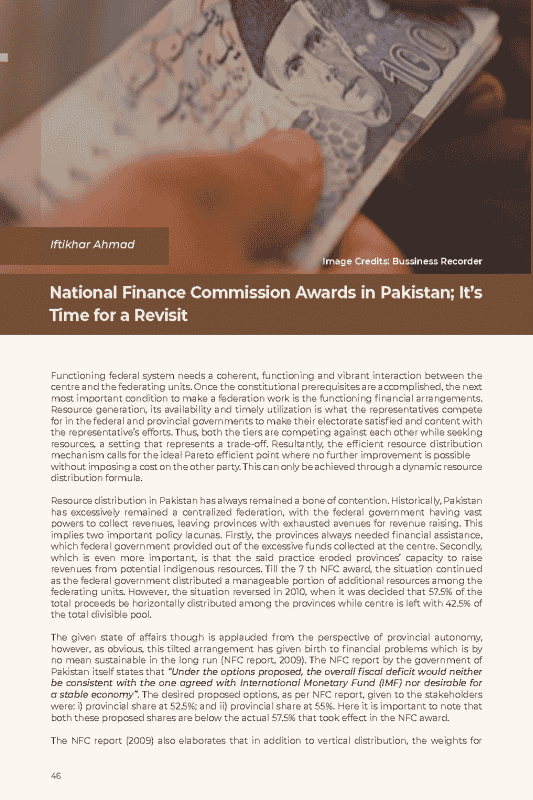National Finance Commission Awards in Pakistan; It’s Time for a Revisit
Functioning federal system needs a coherent, functioning and vibrant interaction between the centre and the federating units. Once the constitutional prerequisites are accomplished, the next most important condition to make a federation work is the functioning financial arrangements. Resource generation, its availability and timely utilization is what the representatives compete for in the federal and provincial governments to make their electorate satisfied and content with the representative’s efforts. Thus, both the tiers are competing against each other while seeking resources, a setting that represents a trade-off. Resultantly, the efficient resource distribution mechanism calls for the ideal Pareto efficient point where no further improvement is possible without imposing a cost on the other party. This can only be achieved through a dynamic resource distribution formula. Resource distribution in Pakistan has always remained a bone of contention. Historically, Pakistan has excessively remained a centralized federation, with the federal government having vast powers to collect revenues, leaving provinces with exhausted avenues for revenue raising. This implies two important policy lacunas. Firstly, the provinces always needed financial assistance, which federal government provided out of the excessive funds collected at the centre. Secondly, which is even more important, is that the said practice eroded provinces’ capacity to raise revenues from potential indigenous resources. Till the 7 th NFC award, the situation continued as the federal government distributed a manageable portion of additional resources among the federating units. However, the situation reversed in 2010, when it was decided that 57.5% of the total proceeds be horizontally distributed among the provinces while centre is left with 42.5% of the total divisible pool.




